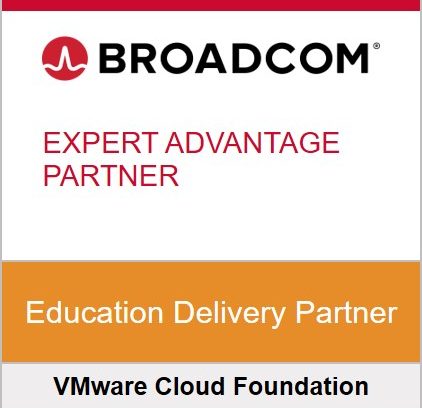category
VMware Site Recovery Manager: Install, Configure, Manage v8.2

Type
Virtual
Classroom ILT
Skill Level
Available dates
Learning Path
Virtual
Duration
1 Day

TYPE
Virtual
Classroom ILT
LEARNING PATH
SKILL LEVEL
DURATION
AVAILABLE DATES
Introduction
This two-day, hands-on training course equips experienced VMware vSphere administrators with the knowledge to install, configure, and manage VMware Site Recovery Manager 8.2. This course also shows students how to write and test disaster recovery plans that use Site Recovery Manager.
Audience profile
This course is intended primarily for:
- vSphere administrators, architects, system engineers, and systems integrators who are responsible for the deployment or management of Site Recovery Manager
Pre-requisites
In addition to their professional experience, students who attend this training should already have the following technical knowledge:
- Attendance of the VMware vSphere: Install, Configure, Manage V6.7 (ESX6) course OR
- Attendance of the VMware vSphere: Fast Track v6.7 (FT6) course OR
- Attendance of the VMware vSphere: Troubleshooting Workshop v6.7 (TSHOOT) course OR
- Attendance of the VMware vSphere: What’s New V5.5 to V6.x (NEW6) course
- Equivalent knowledge and administration experience with VMware ESXi and VMware vCenter Server
Course objectives
After completing this course, students will be able to:
- Summarize the components of Site Recovery Manager architecture
- Deploy and configure the Site Recovery Manager appliance
- Describe the principal disaster recovery topologies that are used with Site Recovery Manager
- Describe VMware vSphere Replication functionality
- Describe storage replication options used with Site Recovery Manager
- Configure Site Recovery Manager to leverage array-based replication
- Deploy and configure VMware vSphere Replication for use with Site Recovery Manager
- Describe the vSphere Replication architecture
- Configure inventory and resource mappings
- Build Site Recovery Manager protection groups based on vSphere Replication
- Build, edit, execute, test and remove a recovery plan
- Perform a planned migration
- Perform reprotect and failback using Site Recovery Manager and vSphere replication.
Course content
| Module 1: : Overview and Architecture | |
|
|
|
|
|
|
|
|
| Module 2: : Deploy & Configure Site Recovery Manager | |
|
|
|
|
|
|
|
|
| Module 3: Configuring Inventory Mappings | |
|
|
| Module 4: Using Array-based Replication | |
|
|
|
|
| Module 5: v Sphere Replication | |
|
|
|
|
| Module 6: Replicating Virtual Machines with v Sphere Replication
|
|
|
|
|
|
| Module 7: Building Protection Groups | |
|
|
|
|
|
|
| Module 8: Building Recovery Plans | |
|
|
|
|
|
|
| Module 9: Testing and Running a Recovery Plan | |
|
|
|
|
|
|
|
|
|
|
|
|
| Module 10: Monitoring and Troubleshooting | |
|
|
|
|
|
|
Torque IT specializes in providing our Clients with Vendor authorized instructor-led training, enablement IT courses, and certification solutions.
Associated certifications and exam
On successful completion of this course, students will receive a Torque IT attendance certificate.

VMware Overview
VMware has been at the forefront with innovative software solutions that enable a software-defined enterprise. To take advantage, organizations need IT professionals who possess the cloud and virtualization skills required to support these environments.
For nearly 8 years, Torque IT has maintained the status of VMware Authorized Training Centre (VATC) in Africa. Torque IT is the first South African owned VMware Authorized Training Centre (VATC) that has locally available skills and resources to offer our clients the broadest range of scheduled authorized VMware training courses, across our national offices, or onsite at any of our customer’s offices across Africa.
Torque IT has been the proud recipient of the prestigious (VATC) of the year award in Africa for four consecutive years. These achievements reflect our commitment to providing you with the highest quality skills development, enablement, training, and certification solutions that demonstrate exceptional depth, breadth, and expertise across Data Center Virtualization, Cloud Infrastructure, Data Center & Cloud Management, Network Virtualization and End-User Computing.
